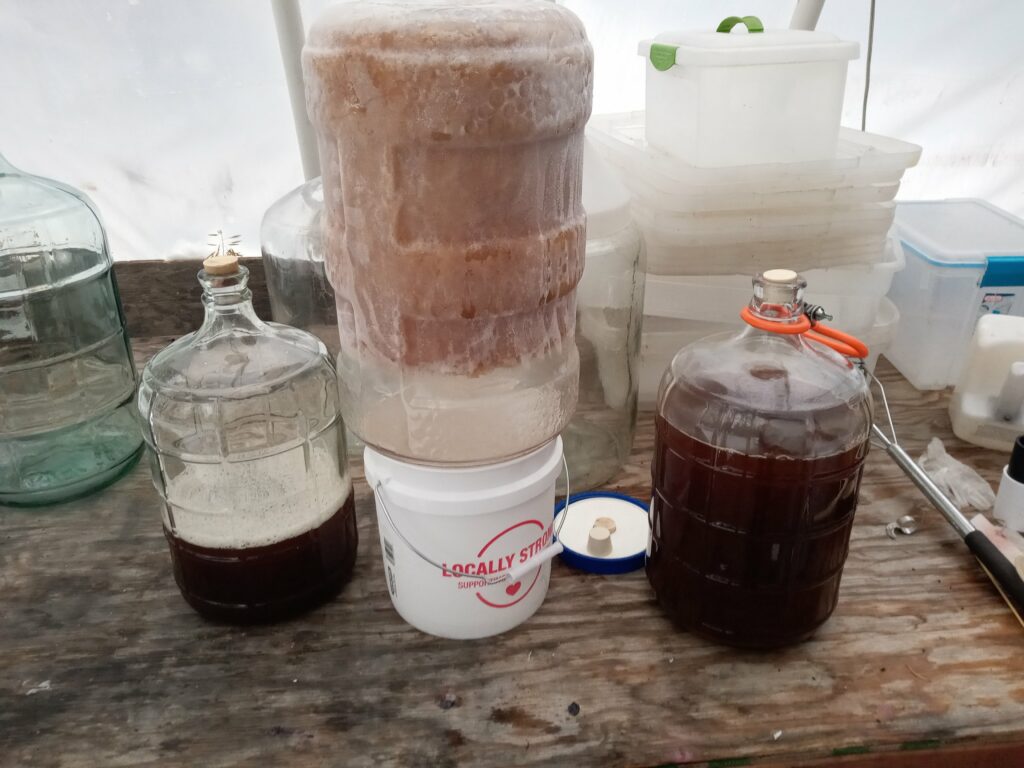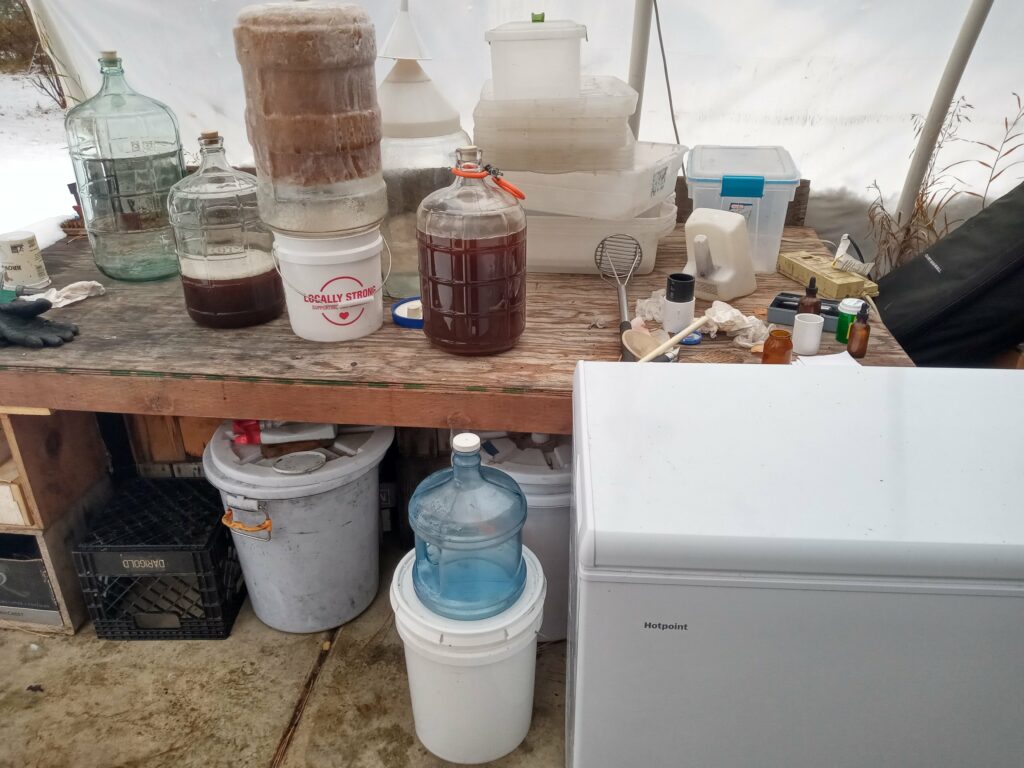Almost everyone likes sweet things, often to our detriment. Nevertheless sugars are an important source of energy for people, animals and microbes. In the wine-making business, the sugar content of grapes is key to whether a wine will be dry or sweet, also to how well it will keep. The brix scale is a standard sweetness reading showing percentage of dissolved solids in a liquid. When solid sugar is dissolved in a liquid, the density increases and so does the diffraction of light. A refractometer shows the amount of sugar in a liquid instantly by measuring the diffraction of light.
Okay, before you fall asleep, welcome to my world. I will add only one more technical note: A rule of thumb is that a sweetness of at least 19° is necessary to ferment sugars into 10% alcohol. At least 10% alcohol is necessary to preserve wine. Then along comes the winter of 2022-23 and grapes didn’t get totally ripe. Can you boost the sugar up to the level you want? The answer is yes in a number of ways. Many of them are problematic.

Sweet grape juice draining from a frozen container
- You can just add sugar. This is basically a chemical solution that dilutes flavor, comes from non-organic sources, and is bad for your health and that of the planet.
- You can cook down the liquid by boiling off water and leaving the sugars. This works great. Think of maple syrup. But it uses a lot of energy and it you don’t watch the pot; it can become a huge black charcoal mess. Trust me. I know.
- You can put it in a freeze dryer and pull it out before the liquid is totally dry. This one is expensive and you are dealing with small amounts in shallow trays.
- You can set it outside in super cold weather and tap off the sweet liquid after the water molecules freeze to each other. This is basically what I will recommend but under controlled conditions. Also don’t use glass containers, they can break. Yes, I’ve done that too.
- Which brings us to putting the liquid in a plastic bottle in a freezer and draining out the sweetened juice after most of the water is frozen, which I will describe here.
To make ice wine, when temperatures reach 10° F and wine grapes are still hanging on the vine, a crew goes out in the dark with gloves on and picks the grapes which are crushed and pressed while still frozen to release the sweet juice. It still has a lot of pulp and color. Normal grape juice is much sweeter than most fruit juice (a grape brix reading of 23° as opposed to 14° for apple cider). That much sugar will make more alcohol than yeast can tolerate so some residual sugar remains after the yeast dies, making ice wine a sweet dessert wine.
Most readers will not be making their own ice wine. But this technique in some other contexts can do a lot more than make sweet wine. It is pretty impossible to keep grapes in a small vineyard away from birds until the temperature is 10°. A small empty freezer or a big one with lots of extra room will do. Also, you don’t need whole fruit. Juice is a lot easier. Moreover, you don’t need grapes. This technique works on all kinds of fruit.
What you do need is a big plastic container. I don’t like plastic either but it beats shards of glass and a soggy mess in the freezer. At cold temperatures, plastic molecules will not do much migrating in the short time it takes to sweeten the juice. Usually an overnight stay will freeze the layer near the outside of the container first, leaving the center liquid. You may have to poke a hole down into the liquid part. Two days will usually give you a completely frozen 5 gallon container. Bigger containers are best because you are guaranteed to get a decent amount of super-sweet juice on the first try.
It pours out slowly, the slower, the sweeter. I tip the frozen container upside down into a bucket that is small enough to keep the top of the container off the bottom of the bucket. You could do this in a heated room, but that is a little risky. If left alone too long, water melts, diluting the sweet juice and runs out of the bucket. A cold porch or garage is a safer option. When it is still below 32° outside, the water stays frozen while the juice runs free for another day or two. With grape juice, one run is usually all you need. With apple, pear, peach or some less sweet juice, you may need two trips to the freezer and the bucket. Most berries are just not sweet enough to make this work at all.
What you can do is pick huckleberries, raspberries etc. in the summer and freeze them. When you have apple cider or some other juice, defrost the berries and mix them in. Then freeze the combined juice and drain out a sweet combination of both flavors. You are going to lose some quantity and some sugar. Typically 5 gallons of juice starting at 20° brix will make 3 gallons of sweet juice at 30° brix or more but there will still be 5° of sugar in the frozen water. I don’t pour this down the drain. I pour it on my compost pile. Microbes and fungus like sugar too.

When I hear the term “as slow as molasses in January”, I don’t think of cooked down sugarcane juice as much as freeze-sweetened fruit juice. After all, why stop at just a little sweeter, you can take this method all the way to syrup or into jelly. Think blueberry-apple syrup or huckleberry-peach on waffles. No sugar added! My appetite is warmed up already.
